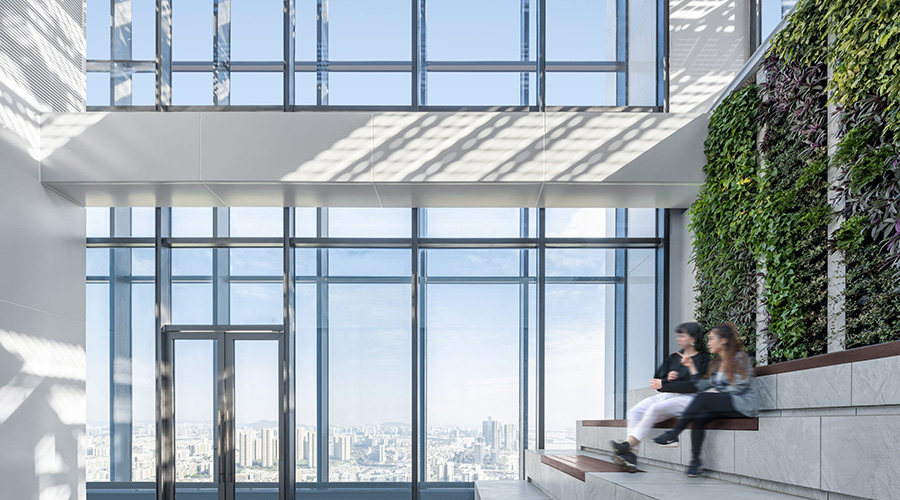Pandemic Highlights Need to Revisit Operational Basics
Retrocommissioning, operational audits, and energy assessments are more important now than ever for ensuing a high-performance building.
Anyone involved with and or responsible for building operations knows well the sensitivity and requirement of a healthy, safe building environment during and in a post-COVID world. Many have done everything knowingly possible to provide a level of perception that everything is being done towards making their building and spaces as safe as possible. But what else is occurring in the back of the house?
It is a rare organization where all operational best practices have the “box checked.” So, why don’t many of these practices matter more? There are myriad reasons ranging from complacency, lack of motivation, and most of the time just limited resources and guidance by leadership.
Quality assurance in every industry is always looked at, if done effectively, through the lens of another set of eyes, as usually existing operations take the path of least resistance and are reactionary, especially during challenging times.
Retrocommissioning, operational audits, and assessments with a goal of just getting back to the basics of sound operational practices is an opportunity that we cannot pass up as the pandemic has really shown us how unprepared as an industry we all were.
Getting organized
Assuring that you have a high-performance operation is not that difficult. It just takes working on and implementing several operational best practices that take time and a willingness by leadership and staff to work on them.
Let us start by laying out the framework for what should be done to achieve a high-performance operation during recommissioning or an operational audit.
First, organization is the most visible and essential part of having a high-performance operation. You can see it from the moment you walk into a project, storage room, plan room and or engineering or facility shop. Is this the kind and type of operation that is doing things proactively with thought or reactively as they occur?
Some of the basic questions to ask and look for include:
- Are plans or documents organized and easily locatable?
- Are plans or documents located and or housed electronically? Is there a written, easy instruction or method to access them?
- Are documents complete and available for all the equipment or systems?
- Are building supplies, tools, and other parts organized, labeled, and regularly used? Or are there leftover parts and items that have been in the building for 10 or more years just collecting dust, taking up space not ever to be used?
- Are there written operational procedures for the different staff positions and or operating shifts? And are these dated, reviewed, and updated?
- Are regular, operational audits and or semi-annual self-assessments performed?
- Does the building or facility have a written, documented “Sequence of Operation” of the building plant or systems equipment that is dated, reviewed, and updated?
- Is there a written narrative of the building operations?
- Are safety procedures, personal protective equipment (PPE), and other in-house programs documented and available for use? Is there an outside resource list available for use during emergencies?
- Is your in-house training program performed regularly, documented, and performed every other week or monthly, covering important topics relevant to current activities?
- Are other teams within the company brought in to share operational best practices?
- Do the contractor partners or teams conduct “Lunch & Learns” with your team?
- Do staff know where they can go for guidance, and or information when they need assistance?
The new HVAC basics
The cleanliness of a space and the air distribution systems are the two most vulnerable areas that need to be “bullet-proof” in their operations and maintenance practices. For the most part, the janitorial changes and practices that have been put into place industry wide are solid, with the utilization of disinfecting chemicals toward reducing the spread of the virus from materials and surfaces.
Regarding the air distribution system, this is an area where there potentially are several unanswered questions for a lot of operations. Filtration and other means of disinfecting the system are being looked at with a higher priority. Mature practices and technologies such as installing MERV-13 filters, installing bi-polar ionizers, installing humidifiers, implementing a fresh air purge system, and installing UV lights are solutions that are being used to update HVAC systems to help protect occupants.
Other solutions involve disinfecting heating and cooling coils with a hospital-type disinfectant such as chlorine dioxide.Basic coil cleaning has and continues to be overlooked and will need to be addressed more proactively going forward as a standard practice.
Market differentiation
Whether it is a pandemic, fire, major water leak, earthquake, or other disaster, having fundamentally sound operational practices in place can be the difference between getting back to business quickly and having occupants re-enter their space faster or not.
In this competitive period, getting back to the basics with operationally sound practices is a differentiator between those operations and buildings that just do the minimum and are reactionary as compared to those that are high performing operations.
As an example of a leader in its class in terms of how the facility is organized, operated, maintained, and in the overall knowledge of the staff is the Aon Center in Los Angeles. The 62-story, 45+ year old, 1.1-million-square-foot high rise tower in downtown Los Angeles, owned and operated by the Shorenstein Company, has done everything necessary to be prepared for and operate in the high-performance levels mentioned above. Everything from engineering staff awareness and training, to having all of the operations organized with accessible documentation in place, to having the systems upgraded to the latest technology which is understood and utilized as it should, this building staff and organization “checks” all the boxes with operational excellence and is a model for the industry.
Our industry will evolve as it has done so for over the last 100 years by integrating new solutions and technologies along with operational best practices that differentiate high-performing buildings from those that are not. Now more than ever, competition for clean, well-operated facilities with demonstrated improved indoor air quality and operations are going to be a premium and in high demand. It is going to be a long, interesting road ahead of us over the next eighteen months. However, those buildings and operations that are making the commitment with high-performance operational practices will be those that will thrive financially, have higher occupancy, and be able to command higher rents while delivering great space.
Carlos Santamaria, RPA, MBA, LEED AP, is principal with CEES-Advisors.
Related Topics:












